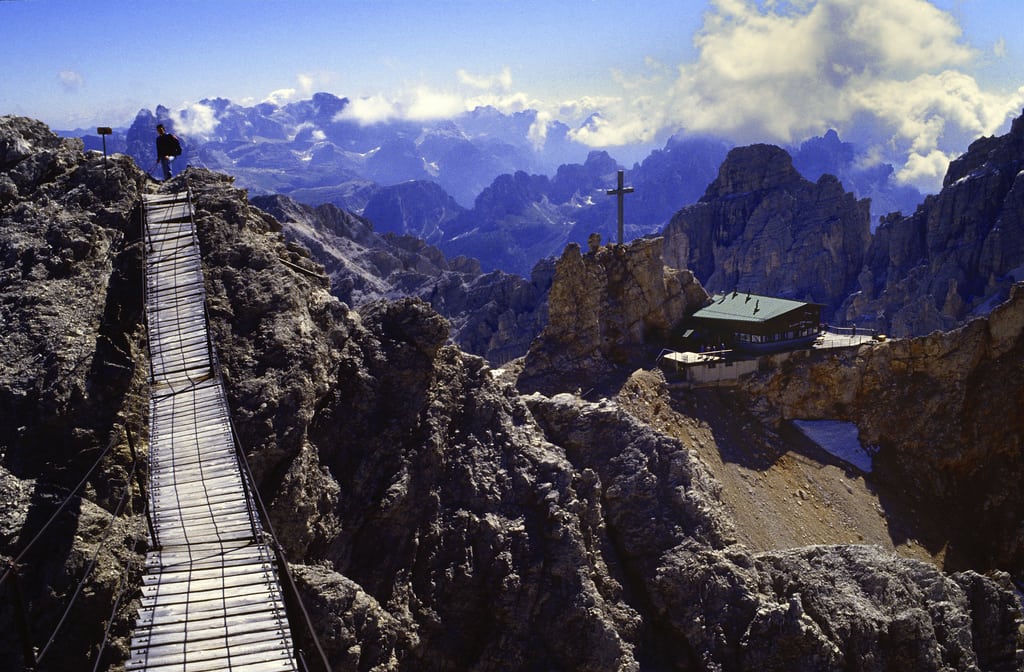Skift Take
We at Skift often discuss the dangers of overtourism. But during a recent forum on global wellness, we discovered a possible cure.
The 12th annual Global Wellness Summit, held in Cesena, Italy, wrapped up on Monday. The summit’s coverage of the wellness industry ran the gamut from day spas to workplace wellness to wellness tourism.
But one of the most interesting takeaways from the summit was the idea that wellness might just be a tonic for overtourism.
Much of wellness’ growth is happening in underdeveloped areas of developed tourism markets. For example, Italy’s South Tyrol region offers a literal breath of fresh air for tourists escaping Venice. Slovenia is promoting a “small is beautiful” wellness mantra as an alternative to neighboring Croatia.
The comprehensive 2018 Global Wellness Economy Monitor, issued by the Global Wellness Institute during the summit, highlights this overtourism theory. Wellness brings visitors to rural areas of over-visited regions. What’s more, a great deal of the growth in the sector is taking place in the developing world.
According to the report, ”Wellness tourism growth is very much a tale of developing markets, with Asia-Pacific, Latin America-Caribbean, Middle East-North Africa, and sub-Saharan Africa all clocking robust gains, and accounting for 57 percent of the increase in wellness trips since 2015. Over the past five years, Asia is the number one gainer in both wellness tourism trips and revenues (trips grew 33 percent in two years, to 258 million annually).”
During a seminar about how countries can tap into the business of wellness travel, Dr. Jean-Claude Baumgarten, the former president and CEO of the World Travel and Tourism Council, stated that wellness tourism could indeed “be a solution to overtourism, by diversifying an established destination’s tourism product” and opening up new areas that travelers might not have previously considered.
Representatives on the panel from Scotland and Switzerland also agreed that wellness tourism can be a way to move travelers out of overcrowded sites and over to rural areas. For example, Stewart Roxburgh, senior specialist for wellness opportunity for business support group Scottish Enterprise UK, suggested that Scotland’s unexplored rural coastline is well-suited for the wellness market, and could provide the ideal location for mental health respites. Meanwhile, on the European mainland, Christine Peter, a spa and vitality expert with Switzerland Tourism, said that as urban populations of both residents and tourists become increasingly dense in her country, there are notable increases in “pure nature demand.”
While the Global Wellness Economy Monitor touches on topics such as overtourism and the perceived expense of wellness tourism, most of its emphasis is on statistics. According to the report, “The wellness economy encompasses industries that enable consumers to incorporate wellness activities and lifestyles into their daily lives.”
So defined, the report then states that wellness is a $4.2 trillion dollar global industry, with wellness tourism comprising the third largest of 10 sectors. Beauty, personal care and anti-aging ($1.08 trillion) and healthy eating, nutrition and weight loss ($702 billion) are numbers one and two. Tourism comes in at $639 billion, with an annual growth rate of 6.5 percent from 2015 (which is double the growth rate for tourism overall). However, before taking those numbers too literally, it’s important to discover the tourism receipts that Global Wellness Institute senior research fellows Katherine Johnston and Ophelia Yeung toss into the wellness tourism pie tin.
The $639 billion figure, according to Johnston, includes spending on both primary wellness tourism, which comprises the smaller piece of the pie, and secondary wellness tourism. Primary covers travelers who are going on a trip specifically to indulge in wellness — whether it be a yoga retreat, a biking holiday, or a digital detox.
On the other hand, the far larger secondary market is a bit more amorphous. According to the report: “The bulk of wellness travel is done by secondary wellness travelers, who account for 89 percent of wellness tourism trips and 86 percent of expenditures in 2017.” Johnston defines this market as “people interested in maintaining a wellness lifestyle on the road.”
Translated, this could mean a business traveler who chooses to stay at a hotel with a spa or near a park, with the intention of spending an hour or two at those locations during a much-longer trip. It could be a traveler visiting Disneyland who opts to eat at the park’s healthier restaurants. All expenditures during such secondary trips, including transportation, lodging and food, are then included in the total wellness tourism numbers, which would indicate to us that the numbers are significantly inflated
The Daily Newsletter
Our daily coverage of the global travel industry. Written by editors and analysts from across Skift’s brands.
Have a confidential tip for Skift? Get in touch
Tags: wellness
Photo credit: South Tyrol in the Dolomites mountain range Italy offers wellness tourism packages. Peter Femto / VisualHunt
